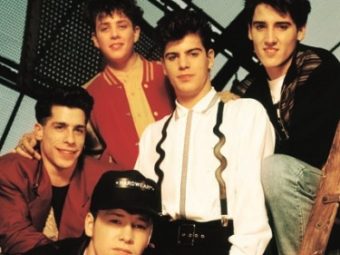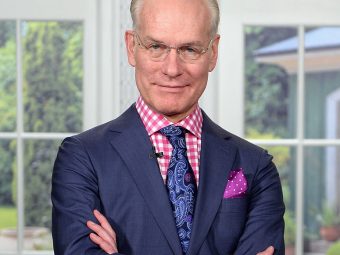Last month, as I made travel arrangements to attend a conference in Detroit, my feelings were mixed. I was nervous to visit a city in such turmoil, a city that has a high rate of crime and just filed for bankruptcy. But, I was also intrigued and hopeful to witness what the Motor City’s residents were doing to rally behind and reinvent their great American City.

Bus tour with D:hive
Upon arriving, I immediately boarded a bus for a tour of the city. D:hive, an organization that connects Detroit’s visitors and residents with the tools and resources they need to live, work or engage in the city, facilitated the bus tour. And these tour guides did not disappoint! As stated on D:hive’s website, guides “must have a love for the city of Detroit.” Their passion was contagious. Attendees learned about all Detroit has to offer, from the arts, to the restaurants, to the sports teams, and to the people. Especially the people. These tour guides believe in, and are proud of, the people of Detroit who are fighting for the future of their city.
Changing Lives Through Art

The Heidelberg Project’s “celebration of color, diversity and harmony”
Our first stop: the Heidelberg Project. It’s an open-air art environment in the heart of an urban community on Detroit’s East Side. In 1986, Tyree Guyton, founder and artistic director, took a stand against the decay, crime and apathy in the neighborhood where he was raised. Within its perimeter, art is displayed on telephone poles, in front yards and even on homes. Using everyday, discarded objects, he transformed an entire block into a world-famous outdoor art environment. Is it art or is it junk? That’s an ongoing debate. But, either way, the Heidelberg Project welcomes more than 275,000 visitors annually and is the third most visited tourist site in Detroit. To top it off, the area hasn’t seen any serious crime since the Heidelberg Project’s inception.
Do-It-Yourself Transportation
Along the way, attendees learned about the Detroit Bus Company (DBC). For years, a light rail to connect downtown Detroit to the rest of the city was discussed. But when that option fell through, Andy Didorosi, founder of the DBC, decided to make it happen himself. “Frustration can power so much,” he said. So, he bought a school bus and hired graffiti artist Kobie Salomon to paint it. And the Detroit Bus Company was born. He believes that all 700,000 residents deserve safe, reliable and clean public transportation. “There are people who lose entire livelihoods because they can’t get to work in the morning,” Didorosi said. And what started as a small project turned into something major. Now, Didorosi is solving all sorts of transit issues, including busing children to after-school programs, allowing them to avoid the alternative of walking through dangerous neighborhoods – thus granting these young students and their guardians the great gift of peace of mind.
Feeding a City

Floridians spreading the word about the “Double Up Food Bucks” program at the Eastern Market
Wrapping up my experience in Detroit, our group visited Detroit’s Eastern Market, a six-block, open-air public market that has been feeding Detroit since 1891. We then ventured to the nearby offices of the Fair Food Network, an organization that believes everyone has the fundamental right to healthy, fresh and sustainably grown food. “In the United States, we are faced with a broken food system that limits access to healthy, fresh and sustainably grown food to many low-income families and under-served communities. We also see the brokenness of this system through the prevalence of diet-related illnesses and the steady increase of obesity in these communities, and the number of people who now rely on government food assistance,” states the website.

Promoting everyone’s fundamental right to healthy, fresh and sustainably grown food
The Fair Food Network educates, informs public policy, expands networks and improves access to healthy foods. Dr. Oran Hesterman, President and CEO, Fair Food Network, told our group that one such way they’re improving access is through their “Double Up Food Bucks” program. Here’s how it works: When customers use federal food assistance benefits to purchase fruits and vegetables at local farmers’ markets and participating Detroit grocery stores, they’ll get matching “Double Up Food Bucks” to spend on more Michigan-grown produce. That means buyers get twice as much fresh fruits and vegetables, while stimulating Michigan’s economy. What a win-win!
Inspiring Its Visitors
Each of these experiences solidified and intensified my desire to see Detroit thrive once again. As I boarded my return flight to Florida, it was obvious that Detroit had gained a fan in me. The reason for it: its people. All the people of Detroit who I had the privilege of meeting and interacting with gave me exactly what I had hoped for. They love Detroit; they are proud of its history; they are excited about its future; and they are rolling up their sleeves and working toward rebuilding the Motor City.
Imagine the success businesses and organizations would bask in if their employees and volunteers adopted the internal buy-in and passion of the aforementioned Detroit residents and supporters. Your internal audience is your face to the rest of the world, and they hold a key in making fans out of your external audiences.

Dinner!
Thank you to the Junior League of Detroit for hosting the conference and to the Association of Junior Leagues International for choosing Detroit as the conference site! And thanks to the Junior League of Greater Lakeland for sending me!
I had some good eats in Detroit, too. There are plenty, but here’s what I experienced: The Rattlesnake Club and Joe Muer’s, which is right on the water.




